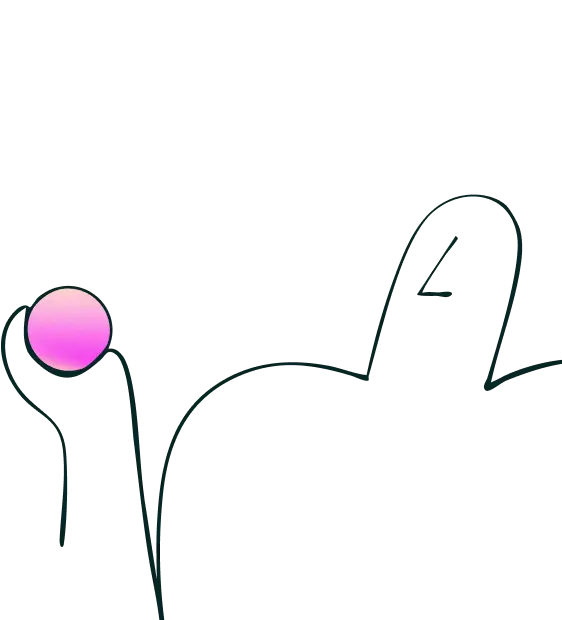06 Jun 2025
|12 min
UX and CRO
Unlock the full potential of your website with UX and CRO. Learn how these disciplines work together to enhance user experiences and drive conversions.

06 Jun 2025
|12 min

Creating a successful digital product requires more than just an appealing design. It demands a deep understanding of user behavior and the ability to optimize conversions. This is where user experience (UX) and conversion rate optimization (CRO) come into play. While distinct in their focus, UX and CRO work hand in hand to improve performance and enhance the overall user experience.
This article explores the similarities and differences between UX and CRO, highlighting how they can work together to create better customer-centered experiences. We delve into the goals, scope, and metrics of each discipline, showcasing their shared reliance on user research, data-informed decision making, and iterative processes.
By understanding how UX and CRO can work together, you can unlock the full potential of your website or app, drive higher conversions, and deliver exceptional user experiences.
Let's dive into the world of UX and CRO and discover how they can transform your digital presence.
UX and CRO are distinct areas of specialization that work together to improve website performance and support effective user experience optimization.
UX design sets the foundation for CRO. It’s the process of creating a visually appealing and user-friendly experience that evokes positive emotions and effectively communicates information. Implementing a mobile first web design approach can further enhance user engagement, especially on smaller devices.
On the other hand, CRO focuses on driving users to take action by analyzing completed conversions, and developing strategies to boost them.
CRO often focuses on specific elements that influence conversions, such as button placement and styling, call-to-action messaging, and other design choices. It examines the routes users take to move toward specific destinations. While UX design provides a topographic map of the landscape and terrain, CRO focuses on the paths users take to reach their desired destinations.
To demonstrate CRO in action, let's consider a case study from conversion.com. They worked with TaylorMade, a golfing gear manufacturer, to improve conversion rates on their website. By experimenting with the wording and placement of their free shipping message, they were able to increase the number of orders. They even tested different versions on mobile and desktop to determine the most impactful approach.
This case study highlights the interconnectedness of UX and CRO. TaylorMade already had a well-crafted user experience that reflected their brand identity, they only needed a few tweaks to drive conversions higher.
Join over 320,000+ marketers, designers, researchers, and product leaders who use Lyssna to make data-driven decisions.
When it comes to optimizing website performance and user experience, UX and CRO are two distinct areas of specialization. You need to know the differences between them to get the most out of their shared features and improve website performance.
UX design emphasizes experiential elements such as information architecture and visuals, while CRO aims to prompt user action in the most efficient ways possible.
The goals of UX include:
User satisfaction: UX aims to make users feel satisfied with their website experience, considering the quality of writing, visuals, and organization.
Usability: UX design eliminates obstacles that hinder user flow, striving to create intuitive and easy-to-follow experiences.
People-centered experiences: Meeting user needs and preferences is a significant aspect of the UX design process.
While both UX and CRO revolve around website visitors, CRO guides users through journeys with the following results in mind:
Increased conversions: CRO's primary objective is to generate more conversions tied to business goals, such as selling products or building email contact lists.
Enhanced conversion pathways: CRO examines key conversion points to determine their effectiveness in guiding visitors.
CRO focuses on conversions, directing efforts toward increasing the percentage of visitors who convert. UX design is multifaceted, analyzing how all design elements harmonize.
UX design aims to implement long-term solutions, even if user expectations change. In contrast, CRO prioritizes immediate action by addressing major issues tied to conversion rates.
UX design concerns itself with:
Overall website experiences: From the moment users land on a website to scrolling and interacting with different sections, UX encompasses the entire user experience.
Relationship building: UX designers strive to create experiences that encourage repeat visits rather than one-time occurrences.
CRO takes a more precise approach with the following goals:
Individual conversions: CRO examines specific conversion points, such as buttons, call-to-action messaging, and customer input forms, to assess their effectiveness.
Short-term improvements: CRO focuses on quick fixes to improve conversion rates.
UX focuses on user perceptions and reactions. Collecting qualitative data, task success rates, and engagement metrics helps determine if a design enhances or hinders user experiences.
CRO gathers quantitative data related to conversions, such as click-through rates, bounce rates, and abandoned carts.
UX design and CRO complement each other effectively. Let’s explore some of the ways they’re similar.
While UX design considers the broader experiential elements of a website or digital product, CRO focuses on the precise pathways and steps users take to complete conversions. Both UX and CRO set goals for users and create digital experiences tailored to meet those goals.
Understanding your target audience and their needs, preferences, and frustrations is crucial for optimizing user experiences. This often starts with a solid grasp of qualitative vs quantitative research, which forms the foundation of effective user research in both UX and CRO.
UX and CRO also rely on user interviews to gather feedback throughout the design process and beyond, which can be used to create more effective user experiences and enhance conversion rates.
Both UX and CRO utilize data to make design choices. UX design relies on quantitative and qualitative data from usability testing to understand user engagement and emotions towards a design, while CRO examines metrics related to the completion of specific actions.
Both UX and CRO are iterative processes that involve continuous testing, monitoring analytics, and making refinements based on performance.
They recognize the importance of ongoing improvement and adaptation to meet the evolving needs and preferences of users. By constantly gathering data, analyzing user behavior, and making data-informed decisions, both UX and CRO strive to optimize the performance of websites and digital products over time. This iterative approach ensures that the user experience and conversion rates are continuously refined and enhanced.
Learn how to boost conversion rates with preference testing in this article from CRO expert Rich Page.
Both UX and CRO aim to improve the performance of websites and digital products. Here are some of the ways they can work together.
Both UX and CRO are focused on building better customer-centered experiences. UX design aims to help users achieve their goals by creating intuitive and satisfying experiences that consider their needs and preferences. On the other hand, CRO focuses on driving users towards specific conversions by analyzing user behaviors and tailoring the experience accordingly.
Both UX and CRO tap into user preferences and behaviors to provide tailored experiences that optimize performance and meet the expectations of the target demographic.
UX and CRO collaborate to create better digital experiences. They contribute to the hierarchy, flow of content, and navigation. A well-designed user experience and easy conversion paths instill trust in visitors and positively shape brand perception.
Both UX and CRO play a role in creating meaningful content for website visitors. UX design focuses on presenting content in structured and engaging ways, ensuring that it’s easy to navigate and understand. CRO focuses on optimizing the messaging and driving conversions. It ensures that the content is persuasive and effectively prompts users to take desired actions.
By working together, UX and CRO ensure that the content on a website is not only relevant but also compelling and conversion-oriented.
Clear calls-to-action are essential for driving conversions. CRO analyzes calls-to-action, carefully evaluating their placement, messaging, and appearance to maximize their effectiveness. By optimizing these elements, CRO aims to increase the likelihood of users taking the desired actions.
A well-crafted UX design also plays a crucial role in ensuring that calls-to-action receive the desired attention without detracting from the overall design. UX considers factors such as visual hierarchy, user flow, and intuitive navigation to create a seamless and engaging experience that guides users toward the calls-to-action. By working together, UX and CRO ensure that calls-to-action are clear, compelling, and seamlessly integrated into the overall design.
Creating feedback loops is an important part of both UX and CRO processes. Both disciplines recognize the importance of gathering feedback from users to identify pain points and other issues that may hinder their experiences.
By actively seeking user feedback, UX and CRO practitioners gain valuable insights into user preferences, frustrations, and areas for improvement. This feedback serves as a guide for making changes that not only optimize the overall user experience but also have a positive impact on conversions. By continuously iterating and incorporating user feedback, both UX and CRO can work together to create digital products that meet user needs and drive desired outcomes.
Mobile optimization is a critical aspect of the collaborative efforts between UX and CRO. By implementing responsive designs, both disciplines ensure that users can seamlessly access content and interact with web apps across various devices.
Responsive designs dynamically adapt the layout, font sizes, and other elements to provide for optimal viewing and user experience on mobile devices. This approach eliminates the need for separate mobile versions of websites and ensures that users can easily navigate and engage with the content, regardless of the device they’re using.
Mobile optimization plays a significant role in enhancing the overall user experience and driving conversions by catering to the growing number of mobile users. By working together, UX and CRO ensure that mobile users have a seamless and engaging experience, leading to increased conversions and user satisfaction.
Lyssna offers a comprehensive suite of CRO tools and UX research features, such as preference testing (which CRO expert Rich highlights as a useful tool in the above video), card sorting, first click testing, surveys, and more, designed to support both UX and CRO efforts. These tools empower you to gather valuable data and insights, enabling you to make informed decisions and continuously improve your product.
With Lyssna, you have all the necessary resources you need to optimize both the user experience and conversion rates, ensuring that your digital product not only meets user expectations, but also drives desired outcomes for your business.
The best teams use Lyssna so they can deeply understand their audience and move in the right direction — faster.
--
Jeff Cardello is a freelance writer who loves all things tech and design. Outside of being a word nerd, he enjoys playing bass guitar, riding his bike long distances, and recently started learning about data science and how to code with Python.


Join over 320,000+ marketers, designers, researchers, and product leaders who use Lyssna to make data-driven decisions.
No credit card required